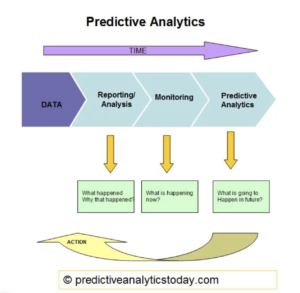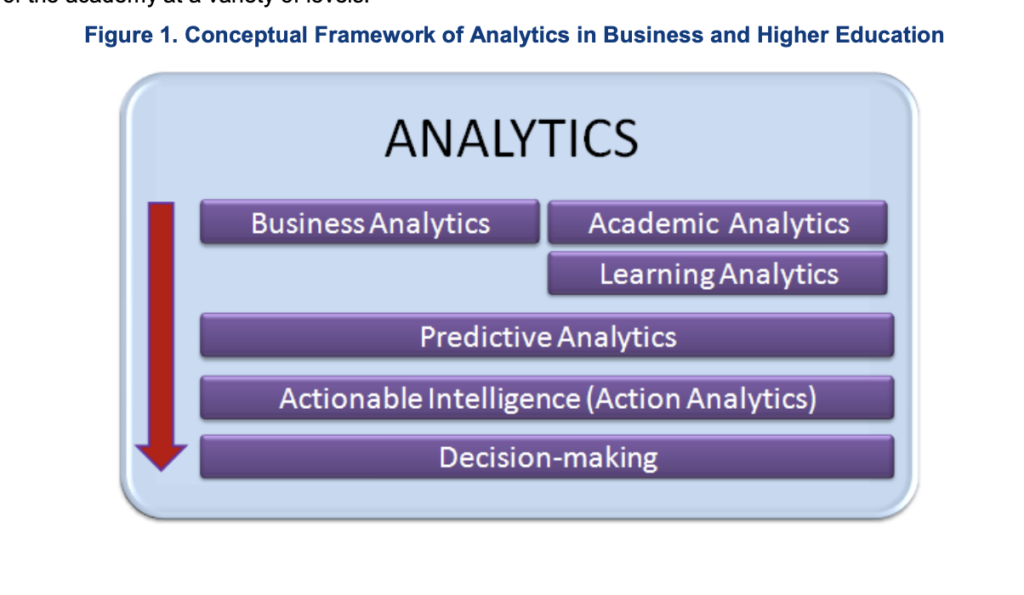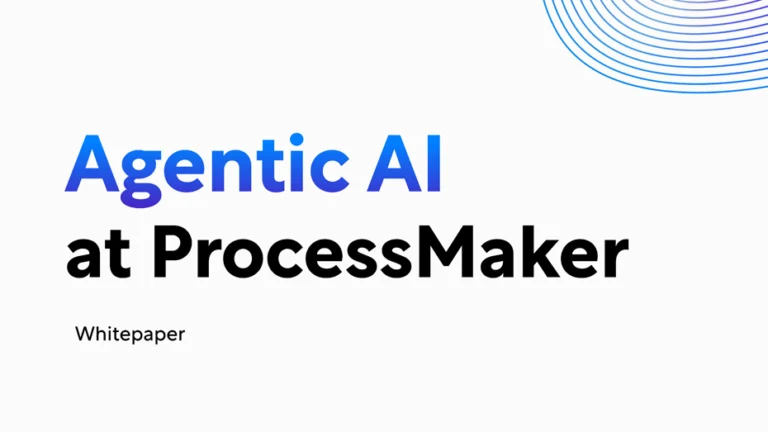Higher ed institutions are facing increasing pressure to retain their students. With the ever-increasing rise of college tuition, more students and families wonder if it is even worth getting a college degree. Not to mention, colleges face tremendous pressure from state and federal officials who push for students who enter public institutions to earn a degree, especially those from marginalized groups. More than 24 states disburse their state funding on how many students a university graduates, instead of how many it enrolls, so retaining students is becoming more critical to their bottom line.
Due to these pressures, some higher ed institutions have turned to predictive analytics. By analyzing demographic and performance data, universities can predict whether students will excel in their courses or require support.
What is predictive analytics?
According to Gartner, “Predictive analytics answer ‘What will happen?’ by recognizing patterns and assessing likely outcomes  using statistical or machine learning techniques. This ability to provide forward-looking insights (not just past and present) provides decision-makers with even more information to support better decisions.”
using statistical or machine learning techniques. This ability to provide forward-looking insights (not just past and present) provides decision-makers with even more information to support better decisions.”
Predictive analytics uses techniques from data mining, statistics, modeling, machine learning, and artificial intelligence (AI), to analyze current data to make predictions about the future.
Types of predictive analytic models:
Generally speaking, the term predictive analytics is used to mean predictive modeling or scoring data with predictive models and forecasting. Nowadays, people are increasingly using the term to refer to its related analytical disciplines, but it is important to note the models and their definitions.
Predictive models: analyze the relationship between the specific performance of a unit in a sample and one or more known attributes or features of the unit. Predictive models often perform calculations during live transactions, for example, to evaluate the risk or opportunity of a given customer or transaction in order to guide a decision.
Descriptive models: quantifies relationships in data to classify customers or prospects into groups. Descriptive models identify many different relationships between customers or products and can be used to categorize customers by their product preferences and life stage.
Decision models: describe the relationship between all the elements of a decision—the known data (including results of predictive models), the decision, and the forecast results of the decision—in order to predict the results of decisions involving many variables. Decision models are generally used to develop decision logic or a set of business rules that will produce the desired action for every customer or circumstance.
Predictive Analytics in Higher Ed
Many higher ed institutions are seeing the benefit of analyzing student data to improve the quality of services they offer. Analyzing past student data to predict what current and prospective students might do has given higher ed institutions more targeted recruiting and use of institutional aid. In Analytics in Higher Education: Establishing a Common Language, Hawkins, and Watson caution that, “analytics is not a one-size-fits-all endeavor and that one has to consider that analytics is a goal-directed practice.”

But many institutions lack the resources to develop predictive analytics applications in-house so they turn to outside vendors. There are a number of factors to consider when selecting a vendor, according to a report from New America, Choosing a Predictive Analytics Vendor: A Guide for Colleges.
According to the report:
Ideally, predictive analytics vendors can facilitate the ethical use of data all of the way through the student life cycle. Vendors can help ensure that data are complete and integrated correctly to diminish the chances of misidentifying students. They can be transparent about their algorithms and test them for disparate impact on student populations. They can be flexible with permissions and use reasonable security protocols to help preserve student privacy and security. They can help evaluate interventions to ensure they are not harming certain groups of students. And they can train staff on the correct interpretation of data and on the dangers of implicit bias.
In order to ensure you are partnering with an ideal vendor, ensure that:
- Data and tools are flexible
- Determine data needs, test the interface, plan for the future
- Transparent use of data
- Test algorithms, ask how effective the model is, ask for a disparate impact analysis, ask how often the algorithm is refined.
- Ensure privacy and security
- Ensure that there are administrative, technological, and physical safeguards.
- Supports research and evaluation efforts
- Evaluate the product’s research base and assist with intervention design
- Supports staff development and implementation
- Does the vendor offer implementation consulting, technical support, and user training?
Meeting these criteria can help higher ed institutions find the right vendor as a key finding from Gartner’s Top 10 Strategic Technologies Impacting Higher Education in 2019 indicates:
“A majority of the higher education analytics tools currently on the market claim to use predictive analytics. However, many of them rely on a constrained model and relatively few sources of data, such as demographic data from the SIS and a limited amount of LMS data. In many higher education uses of predictive analytics, there is a heavy reliance on profile data from the SIS and much less use of behavioral data, although some research points to the power of the latter.”
Predictive Analytics & Nudging
In a previous blog post, we discussed how nudging can be applied to ed tech and a big part of what’s behind a nudge is predictive analytics. These technological capabilities create a number of opportunities for institutions to focus on key patterns in student behaviors and to nudge accordingly.
Conclusion
While the idea of using data to help improve the student experience and recruiting efforts, it is important for higher ed institutions to use these analytics tools in an ethical way. For example, an institution could use predictive analytics to justify using fewer resources to recruit lower-income students because the data shows that the chances of the low-income enrolling are less sure than those with more affluent backgrounds. Predictive analytics is a tool that is already enabling higher education institutions to more effectively and efficiently achieve their goals. However, the job of guiding strategy and deploying this technology ethically is more important than ever. This is why it is critical for universities to have a proper plan in place and be aware of the issues and challenges that come with access to personal information about students.





